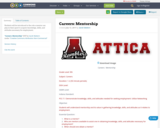
Students will be introduced to the role a mentor can play in their quest to acquire knowledge, skills, and attitudes necessary for employment.
- Subject:
- Career and Technical Education
- Material Type:
- Activity/Lab
- Date Added:
- 07/13/2017

Students will be introduced to the role a mentor can play in their quest to acquire knowledge, skills, and attitudes necessary for employment.

Students will examine how technology is changing or eliminated careers that currently exist. Students will draw conclusions and develop hypotheses about these current careers and the changes that could possibly occur based on technology.
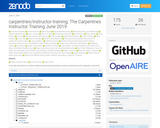
A two-day introduction to modern evidence-based teaching practices, built and maintained by the Carpentry community.

This is a case for Andy Warhol. You've heard his name. You've seen the Campbell's Soup cans. You might know something about The Factory. But perhaps you've wondered why Andy Warhol gets so much attention or why his work even matters. What's the deal with Warhol, and is he worth your time and consideration? Here's your answer.

This is a case for Mark Rothko. Rectangles after rectangles after rectangles. Rothko was a truly prolific artist who found his groove painting hazy swatches of color and stuck with it until the very end. Maybe you've wondered what the point of it all is, or why he did seemingly the same thing over and over again. Here's your answer. Stay tuned for cases for other artists, living and dead!
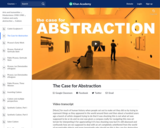
For much of human history, people made art by trying to represent the world as it appeared around them. Until about 100 years ago, when a bunch of artists stopped trying to do that. It was shocking then and it still upsets and confounds today. How are we supposed to deal with art completely removed from recognizable objects? And why should we? This is the case for Abstraction. Created by The Art Assignment.

Ai Weiwei has been called an iconoclast, a radical, a voice for the voiceless, and was once named the most powerful artist in the world. Who is Ai Weiwei? And why is he considered one of the most renowned artists of our time?

Sampling, appropriating, borrowing, stealing. Whatever you want to call it, artists have been copying since time immemorial. We look into the history of the practice, and share our theories of why it is done, and what it can offer us.
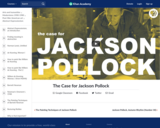
You’ve heard of Jackson Pollock and know of his infamous “drip paintings,” but what is it that you’re supposed to do when you look at his work today? Why did it cause shockwaves in 1947, and what does it mean now? We explore the life, evolution, and legacy of Jackson Pollock.
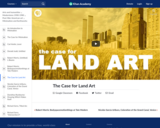
EARTHWORKS. LAND ART. EARTH ART. Whatever you call it, we look at what it means to make art out in nature and in the world from the 1960s to today.
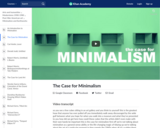
You've probably seen a few cubes sitting in an art gallery and questioned why they were there. How could cubes be important? How did we get here? This is the case for Minimalism.
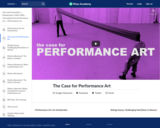
Dubious of performance art? Break into a cold sweat when you realize it’s about to begin? There’s a reason. Here we present you with a brief history of performance art and attempt to sway you to its potential charms. Let us know if you buy it. The paintings in the first scene are by Candida Alvarez (www.candidaalvarez.com), from her exhibition 'mambomountain' at Hyde Park Art Center, Chicago. Photo by Tom van Eynde.
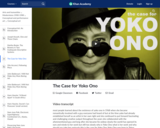
Yoko Ono was an established artist before most of the world heard of her in 1968, and she continues to make groundbreaking work to this day. Who is Yoko Ono? What is her work? And why should you take her seriously? This is the case for Yoko Ono.
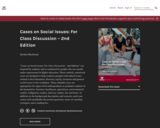
Short Description:
“Cases on Social Issues: For Class Discussion – 2nd Edition” was inspired by students and co-authored by people who are usually under-represented in higher education. These realistic, emotional cases are designed to help students grapple with ethical issues related to discrimination, diversity, equity, inclusion and general social issues in the workplace. These valuable cases are appropriate for upper-level undergraduate or graduate students in the humanities, business, healthcare, agriculture, environmental studies, Indigenous studies, land use studies, law and more. In addition to the background description and scenario, each case comes with modifiable discussion questions, notes on teaching strategies, and a reading list.
Long Description:
This Open Education resource, “Cases on Social Issues: For Class Discussion – 2nd Edition”, includes valuable cases for student use on issues of discrimination, diversity, equity, inclusion and general social issues in the workplace. Included are cases for discussion on workplace scenarios as follows: homophobia; working with Indigenous communities; oil and gas pipelines and the family ranch; invisible disabilities; employee anxiety; safety for women, transgender women and non-binary people; and the bullying of new immigrants and refugees. The critical events portrayed in the cases are realistic and emotional, and most feature the experiences of under-represented and marginalized people. These thoughtful, contemporary cases pose ethical dilemmas about social issues that encourage post-secondary students and instructors to have stimulating, inclusive, and compassionate discussions. Inspired by input from post-secondary students and authored by students and people who are usually under-represented in education material, this resource is designed for upper-level undergraduate or graduate students in the humanities, social sciences, business, healthcare, science, agriculture, environmental studies, Indigenous studies, land use studies, law and more. Each case is supplemented with modifiable discussion prompts, notes for teaching strategies, and a short reading list.
Word Count: 35076
ISBN: 978-1-989864-68-5
(Note: This resource's metadata has been created automatically by reformatting and/or combining the information that the author initially provided as part of a bulk import process.)
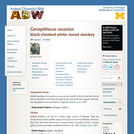
This is an information sheet on the species, Cercopithecus ascanius, provided by the University of Michigan Museum of Zoology.
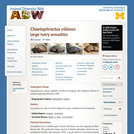
Chaetophractus villosus: Information

The first page of the presentation includes photos of 12 animals. I print this page, cut up the photos, and give a set of photos to each group of students. Working in groups of 2 or 3, the students spend ~10 minutes arranging the photos to depict the evolutionary relationships among the animals. This exercise is followed by 4 clicker questions about relationships that students commonly misconstrue due to convergence or shared primitive features. I use the clicker questions to initiate class discussion of group results. Then we discuss the evidence (anatomy, biochemistry) for current thinking about these relationships. Once we have established a consensus, students are asked to place pictures of a subset of the animals at the tips of the branches on a pre-designed cladogram. The activity gives me insight into students' preconceptions regarding vertebrate phylogeny, encourages students to identify their own misconceptions, promotes peer instruction and highlights problems associated with determining relationships based on shared primitive features. Placing the animals on a pre-designed cladogram allows students to translate their hypothesis about relationships into a visual diagram, an exercise that I hope will help students to extract the phylogenetic hypotheses depicted on cladograms in papers and textbooks. Once we have established a consensus cladogram, students must go one step further and add evidence (synapomorphies) to their cladograms. Students spend ~ 10 minutes brainstorming with their group to place synapormorphies at each node of the diagram. An example is provided for whales and hippos, groups for which the evidence of shared ancestry is difficult to recognize based on the anatomy of living specimens. After adding synapomorphies to their diagrams, students will work together as a class, contributing shared derived features to a group cladogram. If time permits, it would also be possible to complete the exercise with a gallery walk, where each group posts a copy of their cladogram + synapomorphies on the wall for other groups to examine and edit.
(Note: this resource was added to OER Commons as part of a batch upload of over 2,200 records. If you notice an issue with the quality of the metadata, please let us know by using the 'report' button and we will flag it for consideration.)

The primary goal of these resources and programming, created as part of a larger initiative to expand climate justice education at MIT, is to provide support to faculty members and instructors across disciplines in integrating climate justice content and related instructional approaches into their courses.
Funded by the Alumni Class Funds Grant, the Toolkit houses a wide range of climate-justice-adaptable teaching modules, a starter guide for teaching climate justice, resources for students, and climate justice data sets that can serve as supportive tools to enhance teaching content and approaches.
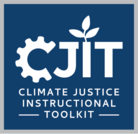
The primary goal of these resources and programming, created as part of a larger initiative to expand climate justice education at MIT, is to provide support to faculty members and instructors across disciplines in integrating climate justice content and related instructional approaches into their courses.
The Toolkit houses a wide range of climate-justice-adaptable teaching modules, a starter guide for teaching climate justice, resources for students, and climate justice data sets that can serve as supportive tools to enhance teaching content and approaches.
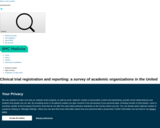
Many clinical trials conducted by academic organizations are not published, or are not published completely. Following the US Food and Drug Administration Amendments Act of 2007, “The Final Rule” (compliance date April 18, 2017) and a National Institutes of Health policy clarified and expanded trial registration and results reporting requirements. We sought to identify policies, procedures, and resources to support trial registration and reporting at academic organizations. Methods We conducted an online survey from November 21, 2016 to March 1, 2017, before organizations were expected to comply with The Final Rule. We included active Protocol Registration and Results System (PRS) accounts classified by ClinicalTrials.gov as a “University/Organization” in the USA. PRS administrators manage information on ClinicalTrials.gov. We invited one PRS administrator to complete the survey for each organization account, which was the unit of analysis. Results Eligible organization accounts (N = 783) included 47,701 records (e.g., studies) in August 2016. Participating organizations (366/783; 47%) included 40,351/47,701 (85%) records. Compared with other organizations, Clinical and Translational Science Award (CTSA) holders, cancer centers, and large organizations were more likely to participate. A minority of accounts have a registration (156/366; 43%) or results reporting policy (129/366; 35%). Of those with policies, 15/156 (11%) and 49/156 (35%) reported that trials must be registered before institutional review board approval is granted or before beginning enrollment, respectively. Few organizations use computer software to monitor compliance (68/366; 19%). One organization had penalized an investigator for non-compliance. Among the 287/366 (78%) accounts reporting that they allocate staff to fulfill ClinicalTrials.gov registration and reporting requirements, the median number of full-time equivalent staff is 0.08 (interquartile range = 0.02–0.25). Because of non-response and social desirability, this could be a “best case” scenario. Conclusions Before the compliance date for The Final Rule, some academic organizations had policies and resources that facilitate clinical trial registration and reporting. Most organizations appear to be unprepared to meet the new requirements. Organizations could enact the following: adopt policies that require trial registration and reporting, allocate resources (e.g., staff, software) to support registration and reporting, and ensure there are consequences for investigators who do not follow standards for clinical research.